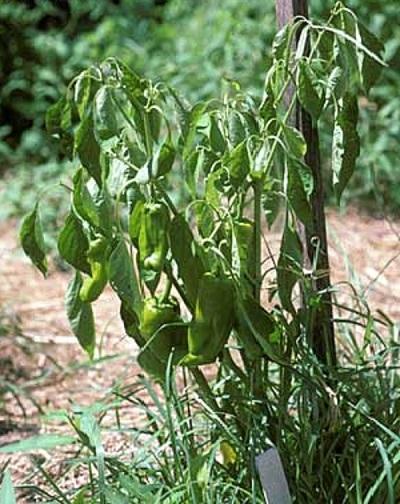Wilting can be caused by drought or waterlogged soil
- Plants wilt when roots are unable to supply sufficient moisture to the stems and leaves.
- Wilting for short periods of time does not harm plants.
- Sometimes a plant wilts on a hot day because moisture is evaporating from the leaves faster than the roots can take it up. If there is ample soil moisture, the plant will absorb water in the evening to restore turgor to the stems and leaves.
- Over a prolonged period, however, drought will cause serious damage, such as yellowing, leaf scorch, browning, leaf drop, or stunted growth.
- Extended periods of drought also inhibit flower and fruit formation.
- Severe heat and water stress when a plant is in bloom may cause scorching or browning of flower buds and blossoms.
- Plants vary in their ability to tolerate drought and some may die suddenly after extended periods of drought.
- Locate garden close to a water source. Be prepared to water all vegetable plants deeply at least once each week during hot, dry weather.
- Conversely, vegetable plant roots growing in poorly drained soils can quickly become deprived of needed oxygen leading to wilting and yellowing, and browning of leaves and stems. This will be most noticeable on tight, clayey soils during prolonged rainy periods and can lead to severe disease problems. Avoid poorly drained soils. Plant on raised beds if necessary.
- Hot, drying winds can also cause temporary wilting even when soil moisture is adequate.

